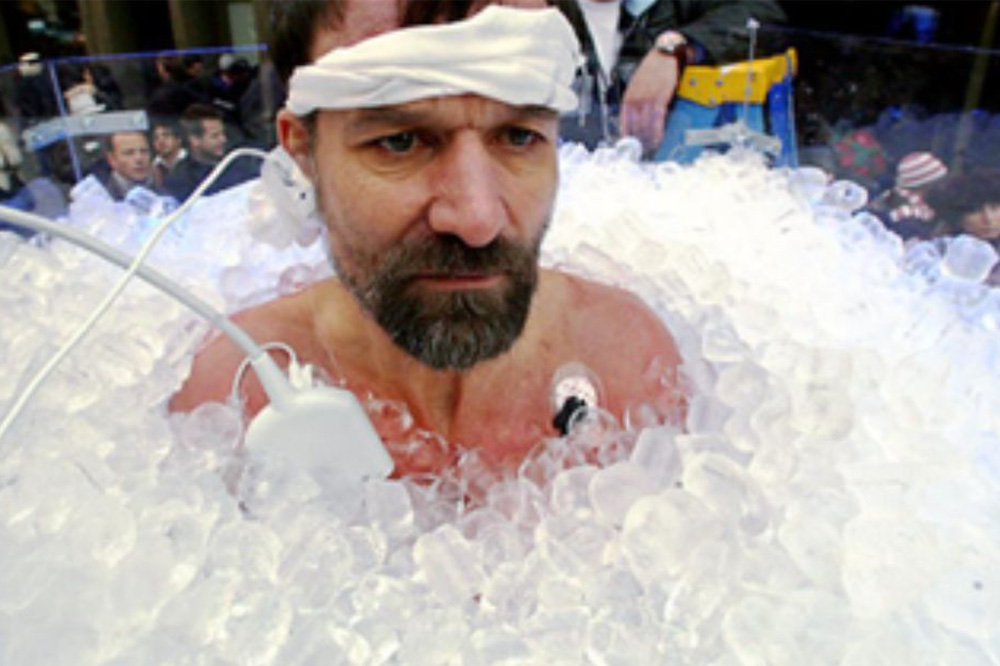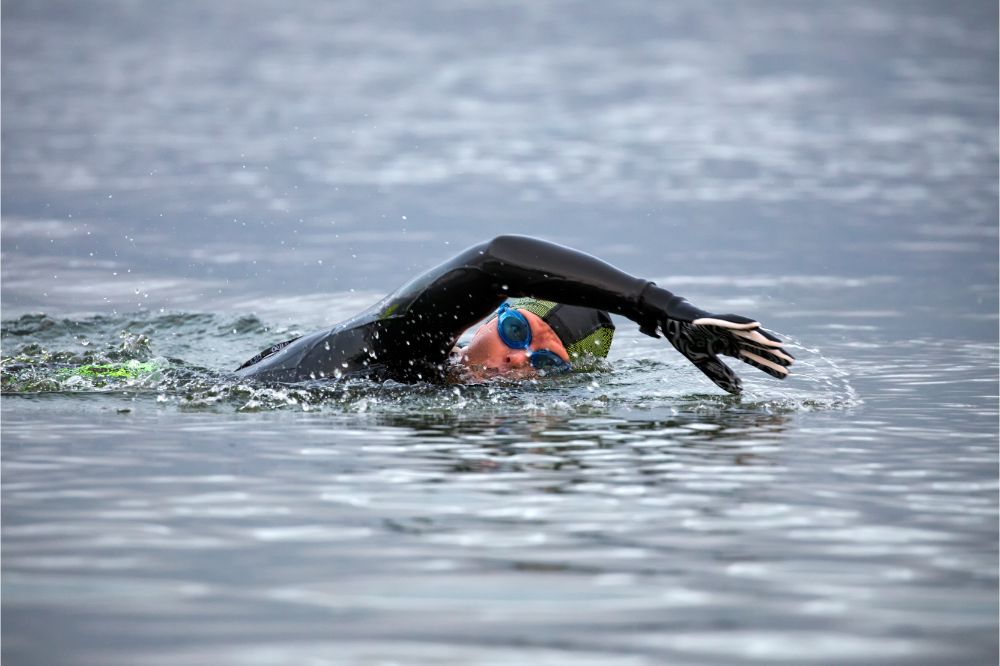Ice swimming is a great way to improve your health and sense of well-being, but it is not without risks. While some peak performance athletes can swim in freezing water for over an hour, is that safe and healthy? How long can you go ice swimming?
How Long to Swim the Ice Mile?
The Ice Mile is a legendary endurance event where athletes swim a mile or more in water that is at most 5°C/41°F. Formal Ice Mile rules require swimmers to wear nothing but a swim cap, ordinary bathing suit, and goggles; world-class swimmers can complete the Ice Mile in an hour or less.
However, nobody starts by swimming the Ice Mile, even the most elite swimmers. The body’s ability to tolerate cold water swimming grows over time, and it can take months or several years to build up endurance for long, cold swims.
Stages of Swimming in The Cold
Cold water swimming carries health risks, especially for beginners and people with underlying medical conditions.
These risks are tied to the length of exposure in cold water, the temperature of the water, and the amount of energy or heat produced by the swimmer.
Together, these factors influence how long it is possible for someone to ice swim. In addition, there are several distinct phases of an ice swim that have unique risks.
Here are the physiological stages of ice swimming.
Stage 1: Initial Cold Shock: First Two Minutes
When you expose the body to cold water, it triggers several automatic physical responses.
For example, it activates the gasp reflex, where you involuntarily inhale large gasps of air. It also rapidly increases heart and respiratory rates, so your breathing is fast and deep.
Cold shock usually lasts for 30 seconds and is over within 2 minutes. Experienced ice swimmers have very mild cold shock reactions as their bodies adapt to cold water immersion.
Most significant Risks During Cold Shock:
Cold shock is risky for people with pre-existing heart conditions, as the sudden increase in heart rate can strain a fragile heart. Cold shock also increases the risk of drowning for inexperienced swimmers, who may accidentally inhale water. Cold shock can be the most dangerous part of an ice swim for beginners.
Stage 2: Shorter Term Exposure: 2-20 Minutes
After the first two minutes, the body and breathing adjust to the cold water. As the body becomes colder, the muscles in the extremities become stiffer and less powerful. This is why it takes so much longer to swim a mile in cold water than in warm water, no matter how well-conditioned an athlete is.
Biggest Risk During Short-Term Exposure: Swim Failure
“Swim failure” is when the sudden weakness of the muscles makes it difficult or impossible to swim or even keep your head above water. Swim failure can happen to even experienced cold water swimmers.
Stage 3: Longer-Term Exposure: Over 15 Minutes
As you swim in cold water, especially if you exert your muscles during swimming, blood gets cooled in the skin and extremities. It then travels back to the body’s center, gradually reducing your core temperature.
Over this time, you are at increased risk of hypothermia, but hypothermia is highly individual and unpredictable.
Biggest Risk During Long-Term Exposure: Hypothermia
It is vital to leave the water and get warm and dry when you experience hypothermia signs. Early symptoms of hypothermia include:
- Confusion and memory loss
- Fatigue or drowsiness
- Slow or slurred speech
- Loss of coordinationGet out immediately if you ever begin to feel warm, relaxed, and happy in cold water. This is the most dangerous phase of hypothermia.
Stage 4: Afterdrop: 0-10 Minutes After Exposure
Because cooled blood is still circulating through the body, your core temperature decreases even after you leave the cold water. Therefore, it is vital to get dry and in warm conditions within the first 10 minutes of leaving the water, to protect yourself from the ongoing cooling effect.
Biggest Risk During Afterdrop:
Afterdrop exacerbates any symptoms of hypothermia and is often accompanied by uncontrollable shivering, shaking, and feeling unwell. In some cases, it can cause loss of consciousness.
How Long Can You Go Ice Swimming?
As you can see from the phases above, people who endure long periods of ice swimming can remain in the long-term exposure phase for more extended periods without suffering from hypothermia. However, those are experienced ice swimmers with bodies acclimated to the cold, which reduces many risks.
For people who are new to ice swimming, it is always important to increase your exposure gradually over time. Here is a good system for gradually increasing the amount of time you can go ice swimming:
Splash Cold Water On Your Head and Neck
Splash it on yourself before getting into cold water, especially on your head and neck. This can trigger your cold shock response and reduce the cold shock experienced once you are in the water.
Immerse Yourself in the Water
After you have splashed yourself, get into the water. Be attentive to your breath and gasp response. Stay in the water long enough for your breathing to stabilize before you start your swim.
Get Out of the Water
After 2 minutes, get out of the water and change into dry clothing. Rest and get warm and dry.
Repeat this cycle, gradually increasing the length of time you stay in the water and the amount of exertion you put into swimming. Always be attentive to the signs of hypothermia, and always change into dry clothes and get warm immediately after you leave the water. Over time, you will be able to ice swim for longer and longer, finding out your own limits and comfort levels. And who knows: maybe you’ll be swimming your own Ice Mile soon.
Disclaimer: You should see a doctor prior to starting with cold training and research the risks involved.











Discussion